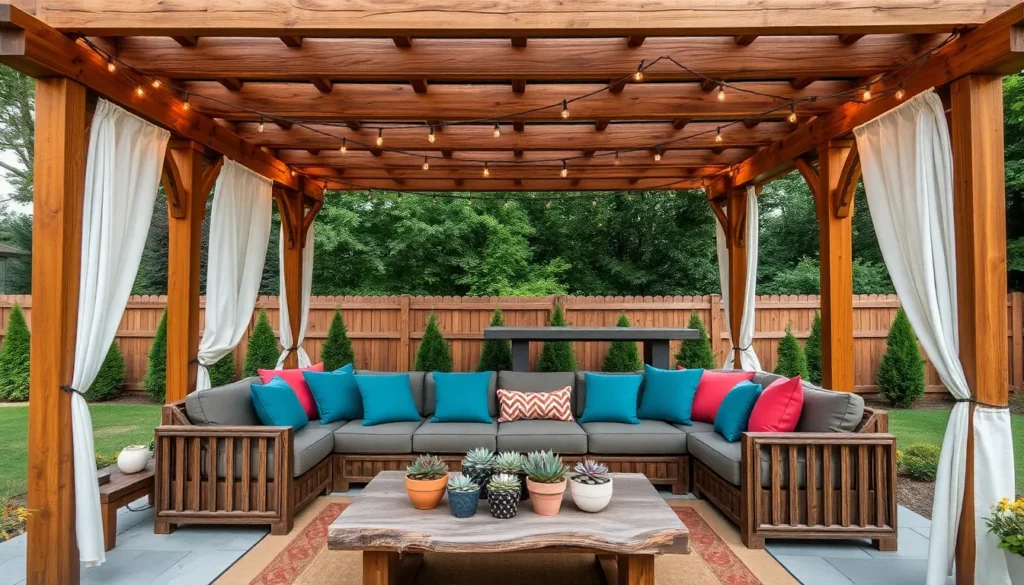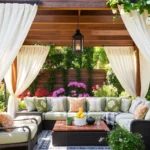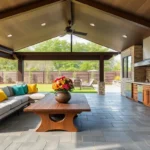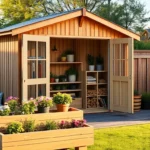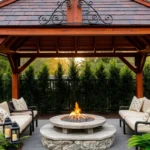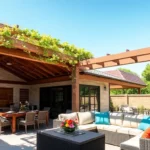Transforming your outdoor space into a personal oasis doesn’t need to be a daunting or expensive endeavor. Whether you’re just starting to explore the possibilities or you’re a seasoned homeowner looking to enhance your existing setup, creating a welcoming and functional outdoor area can be both satisfying and surprisingly simple. Today, we’re diving into the world of flexible outdoor shelters—essential structures that provide comfort and style while accommodating any budget.
In this article, you’ll discover twelve adaptable shelter options that cater to diverse needs and aesthetic preferences. From charming pergolas to practical awnings, each solution offers a unique way to elevate your outdoor experience. Whether you’re aiming to host lively gatherings or seeking a serene retreat, you’ll find inspiration and practical tips to help you craft a space that truly reflects your lifestyle. Join us as we explore these versatile ideas that promise to make your dream outdoor living space a reality.
Exploring Budget-Friendly Tent Options
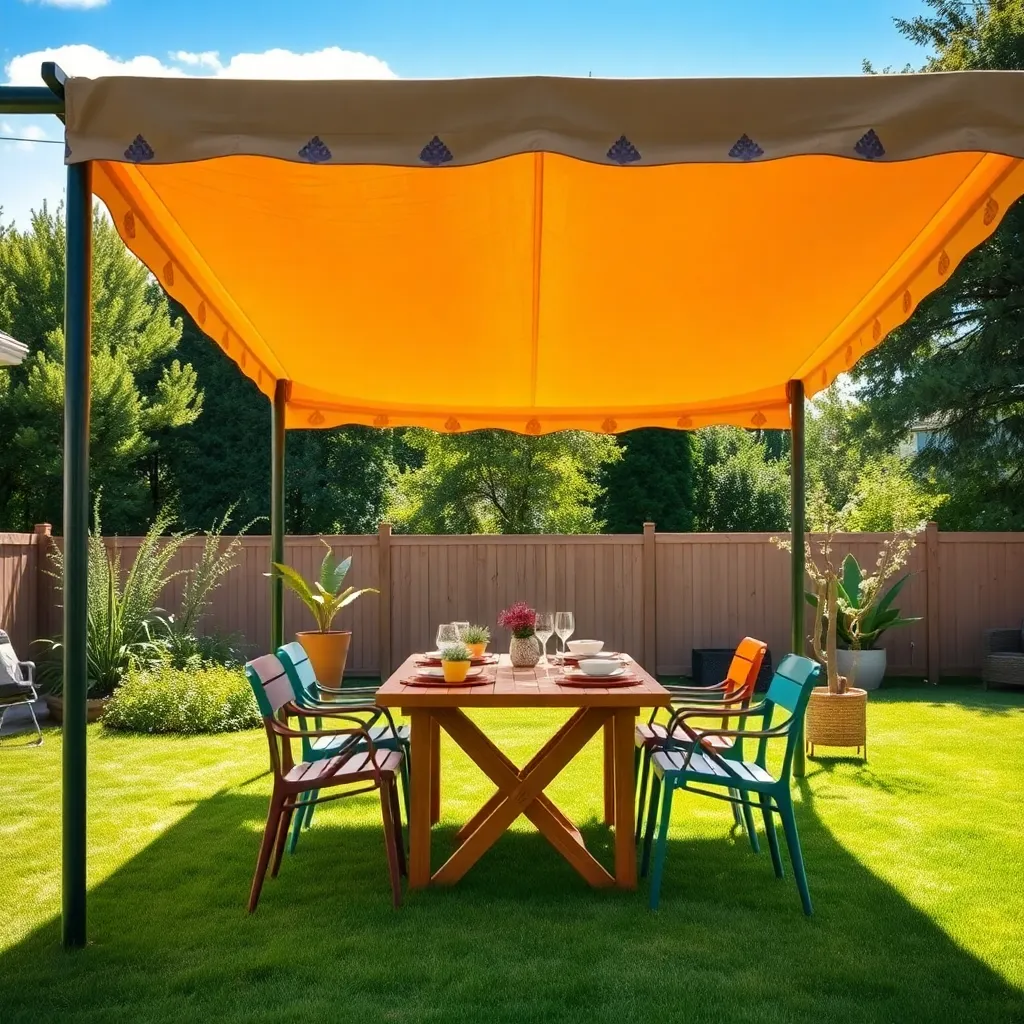
When it comes to budget-friendly tent options, consider starting with materials like durable polyester or nylon, which are both cost-effective and weather-resistant. Look for tents with a simple dome or A-frame structure that can be easily assembled using lightweight aluminum or fiberglass poles. These designs are not only beginner-friendly but also offer stability in various weather conditions. For added comfort, choose a model with a rainfly and ventilation features, ensuring a dry and cozy shelter during unexpected downpours.
For those looking to maximize their investment, focus on tents offering versatile features such as modular designs. Some tents come with detachable sections, allowing you to customize the space based on the number of occupants or gear storage needs. If you’re inclined towards a DIY approach, consider purchasing an affordable tarp and constructing a simple yet effective canopy using rope and stakes. This versatile setup can be adapted for different environments, providing both shade and shelter at a fraction of the cost of traditional tents.
Affordable Pop-Up Canopy Solutions
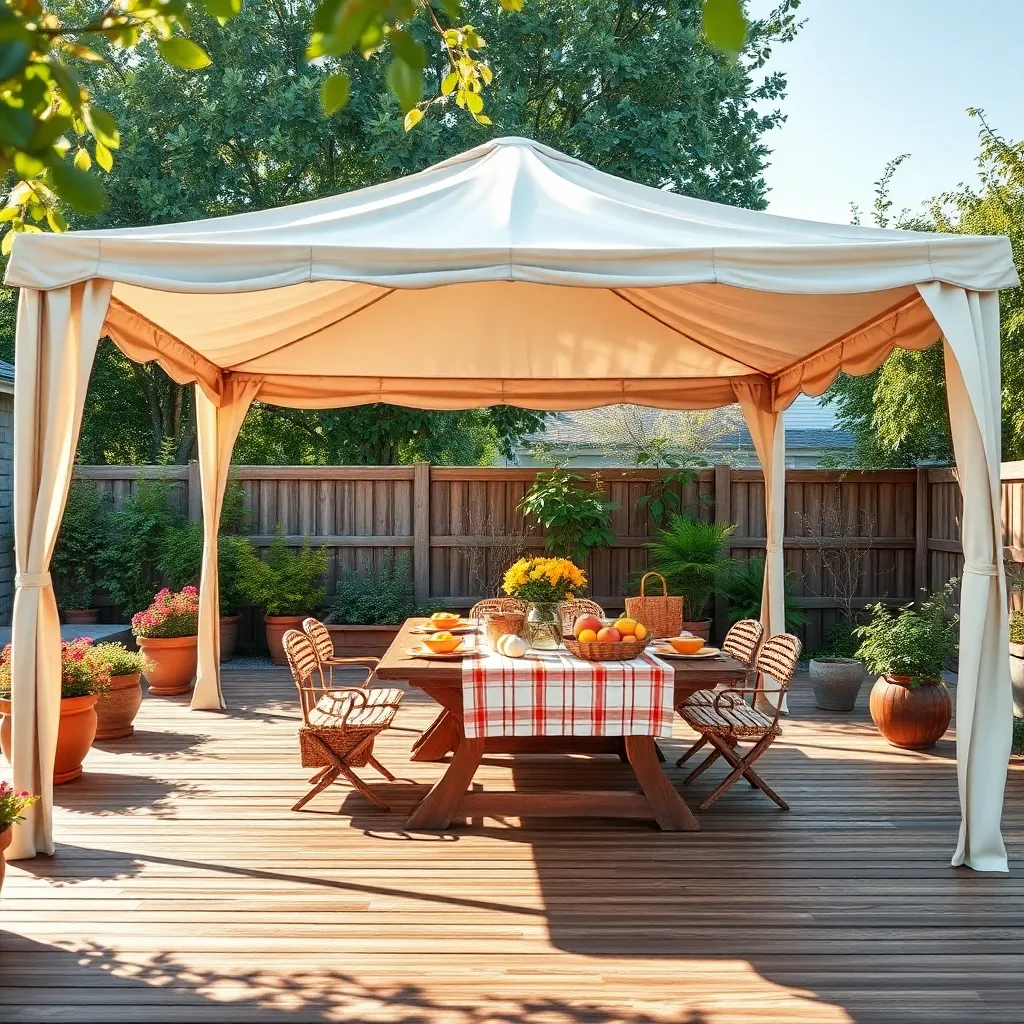
For those looking to create a quick and flexible outdoor space, pop-up canopies are an ideal solution. These canopies are typically made from durable materials like polyester or polyethylene, offering excellent protection against sun and light rain. They are designed with collapsible frames which make them easy to set up and dismantle, perfect for both spontaneous gatherings and planned events. For beginners, a 10×10-foot canopy is a great starting point, offering enough coverage for a small group without overwhelming the space.
To enhance your pop-up canopy experience, consider investing in models with additional features like sidewalls or mesh screens, which can provide extra protection from insects and wind. Advanced users might look for canopies with adjustable legs, allowing for better adaptation to uneven ground. Secure your canopy using anchors or sandbags, especially in windy conditions, to prevent any mishaps. By selecting the right materials and features, you can enjoy a comfortable and stylish outdoor retreat without breaking the bank.
Versatile Gazebos for Any Occasion
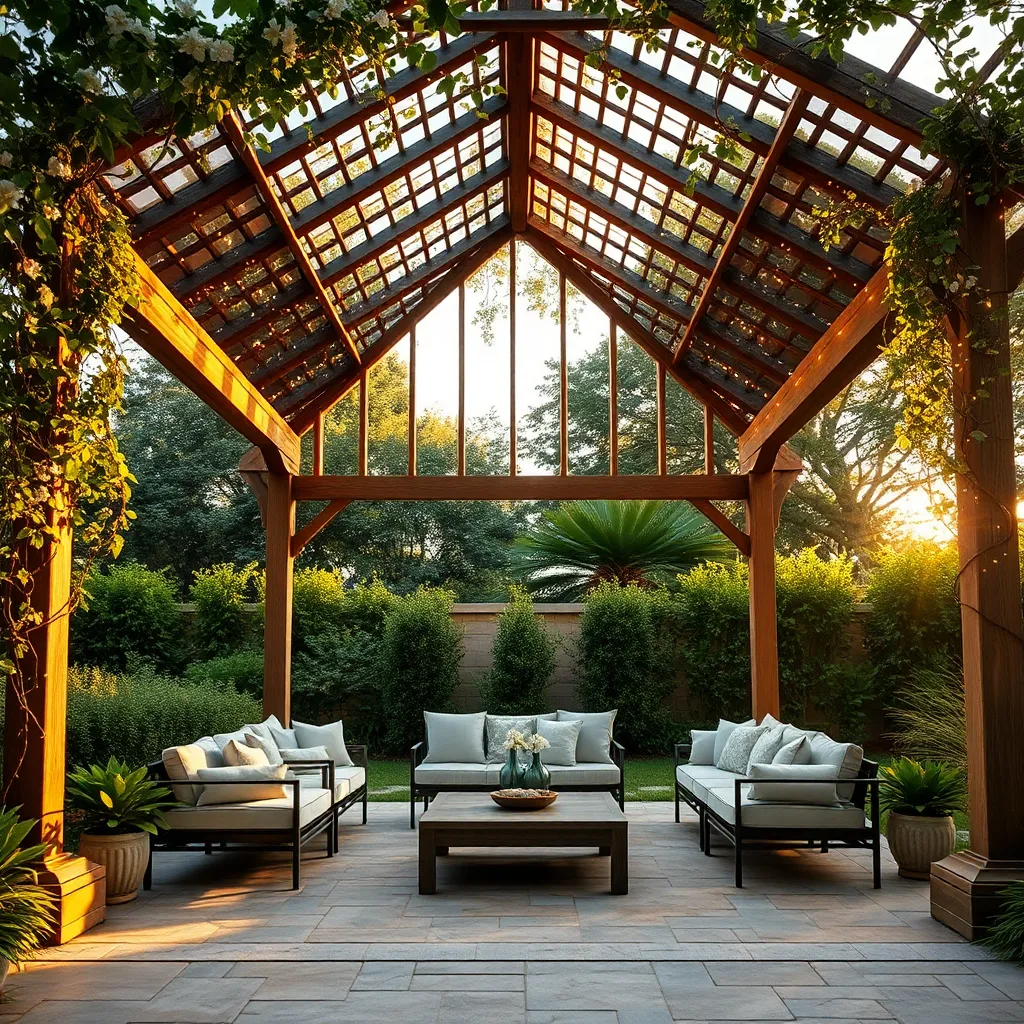
Versatile gazebos are an excellent choice for homeowners seeking a flexible outdoor shelter that can adapt to any occasion. To ensure your gazebo meets your needs, consider using materials like cedar or pressure-treated wood for a robust and weather-resistant structure. Opt for a size that suits your space, typically ranging from 10×10 feet for smaller areas to 12×16 feet for more expansive lawns. Incorporating design elements such as removable side panels or curtains can offer both privacy and protection from the elements, making your gazebo a comfortable retreat all year round.
For those looking to add a touch of elegance to their outdoor area, consider a gazebo with a peaked roof or intricate lattice work. These features not only enhance aesthetic appeal but also improve functionality by providing better drainage and airflow. Advanced gardeners can explore options like integrating climbing plants or vines, which can create a natural canopy and blend the structure seamlessly into the garden. Remember, the key to a successful gazebo setup is ensuring it complements your outdoor space while providing a practical solution for entertaining and relaxation.
Portable Hammock Shelters Explained
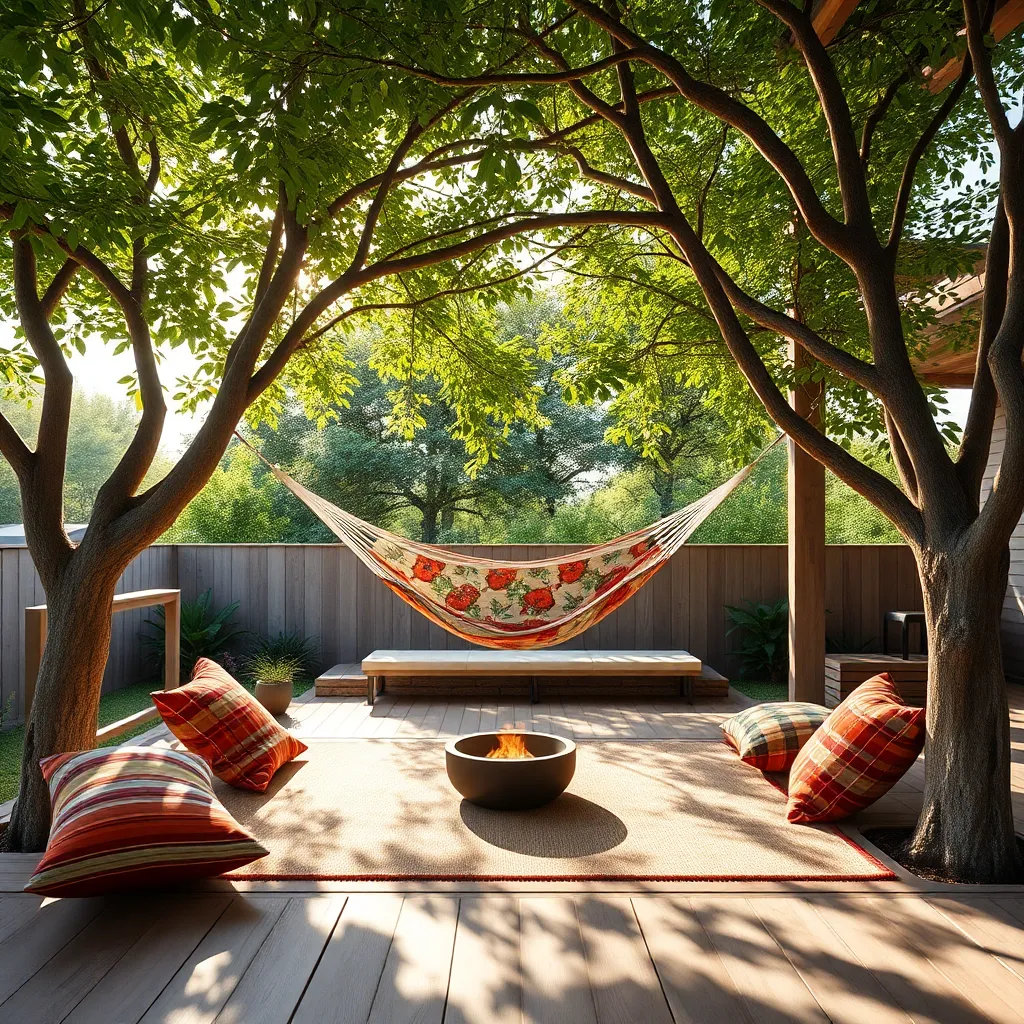
For those seeking an adaptable, easy-to-set-up option, portable hammock shelters offer a unique blend of comfort and versatility. These shelters are designed to be lightweight and compact, making them perfect for both backyard relaxation and camping adventures. When choosing a portable hammock shelter, consider materials such as durable nylon or polyester, which provide both strength and weather resistance. For added stability and comfort, look for models with integrated bug nets and rain tarps, ensuring you stay protected from the elements while enjoying the outdoors.
Setting up a portable hammock shelter involves more than just hanging a hammock; it’s about creating a cozy and functional space. Ensure proper anchoring by using tree-friendly straps, which help distribute weight without damaging trees. For an extra touch of comfort, add a lightweight underquilt to provide insulation during cooler nights. Advanced users can explore modular systems that allow for customization, such as attaching additional gear pockets or a small gear loft for storage. With a few thoughtful choices, your portable hammock shelter can become a personal oasis, offering a serene escape right in your backyard or on your next adventure.
Inexpensive Tarps for Quick Coverage
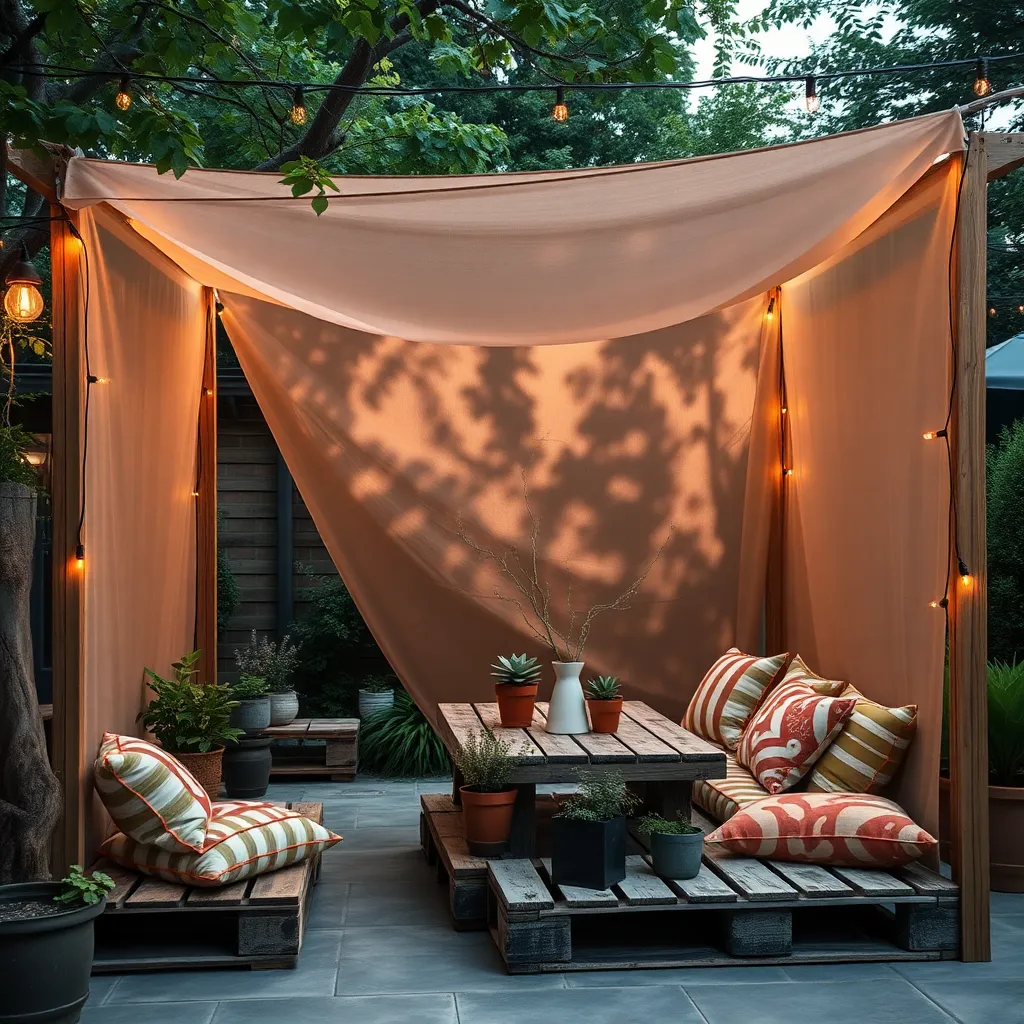
For quick and cost-effective outdoor coverage, inexpensive tarps are a homeowner’s best friend. These versatile sheets, typically made from polyethylene or canvas, offer a straightforward solution for protecting gardens, patios, or outdoor equipment from the elements. Choose a tarp size based on your specific needs; common dimensions range from 8×10 to 20×30 feet, but they can be custom-cut for unique spaces. Beginners should opt for polyethylene tarps for their lightweight and waterproof properties, while more seasoned gardeners might appreciate the durability of heavy-duty canvas tarps.
Setting up a tarp shelter is a breeze with a few basic tools. You’ll need sturdy ropes or bungee cords to secure the tarp between trees or poles, ensuring the edges are taut to prevent wind damage. Consider adding grommets for extra stability if your tarp doesn’t already have them. For a more advanced setup, incorporate adjustable poles to create a pitched roof effect, allowing rain to run off easily. This setup is not only practical but also enhances your outdoor space’s functionality, offering quick protection without breaking the bank.
Compact Camping Shelters for Two
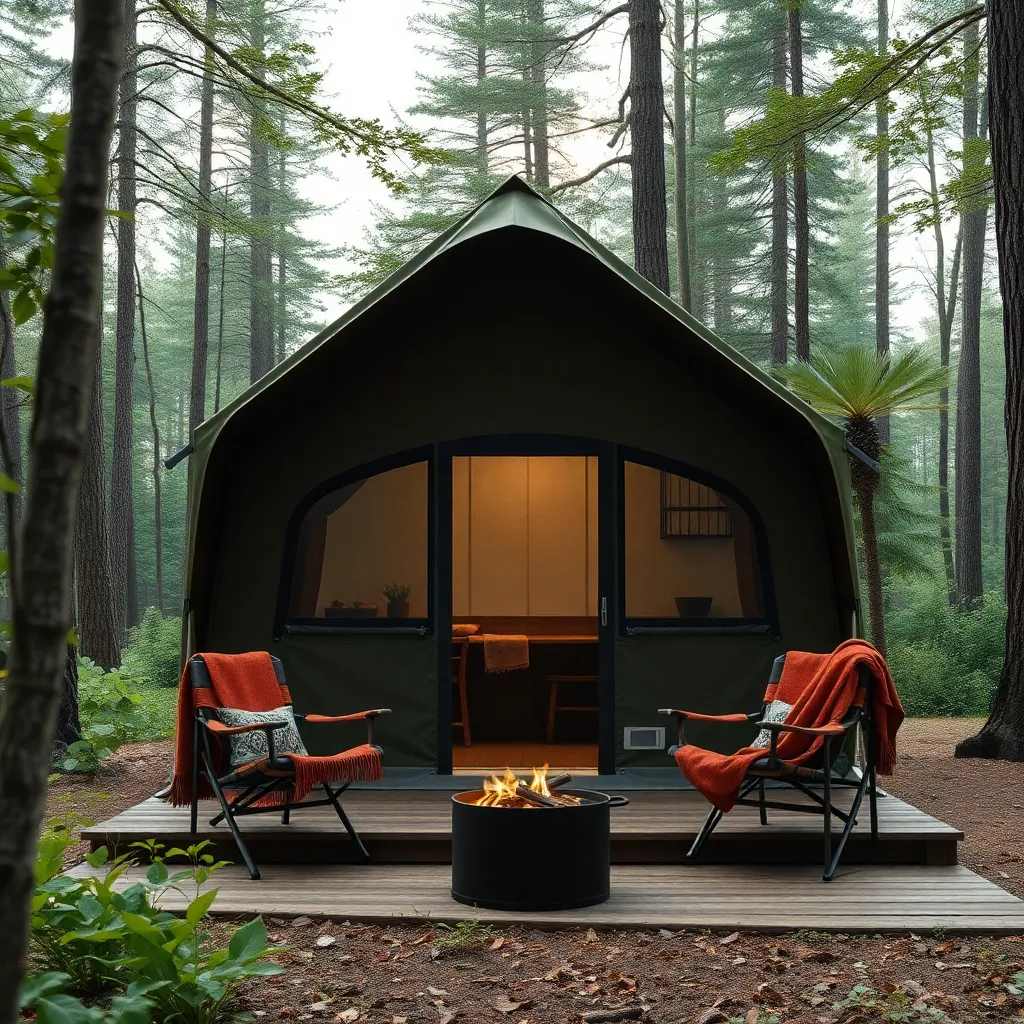
For campers seeking a cozy retreat for two, lightweight tents are an excellent choice. Opt for models made from durable materials like ripstop nylon, which offer both portability and weather resistance. Look for a design with a streamlined setup, such as a pop-up or clip-in pole system, to ensure easy assembly after a long day of hiking. Ventilation is also crucial; choose tents with mesh windows or vents to prevent condensation inside.
Consider investing in a tent with a small footprint—ideally, something around 7×5 feet—to fit snugly in tight camping spots. For extra comfort, look for features like gear lofts and interior pockets to keep essentials within reach. Advanced campers might appreciate tents with a vestibule for gear storage or an extended rainfly for additional weather protection.
- Tip: Always carry a repair kit, including adhesive patches and a small sewing kit, to handle any unexpected tears or damage during your trip.
Cost-Effective Beach Shade Ideas
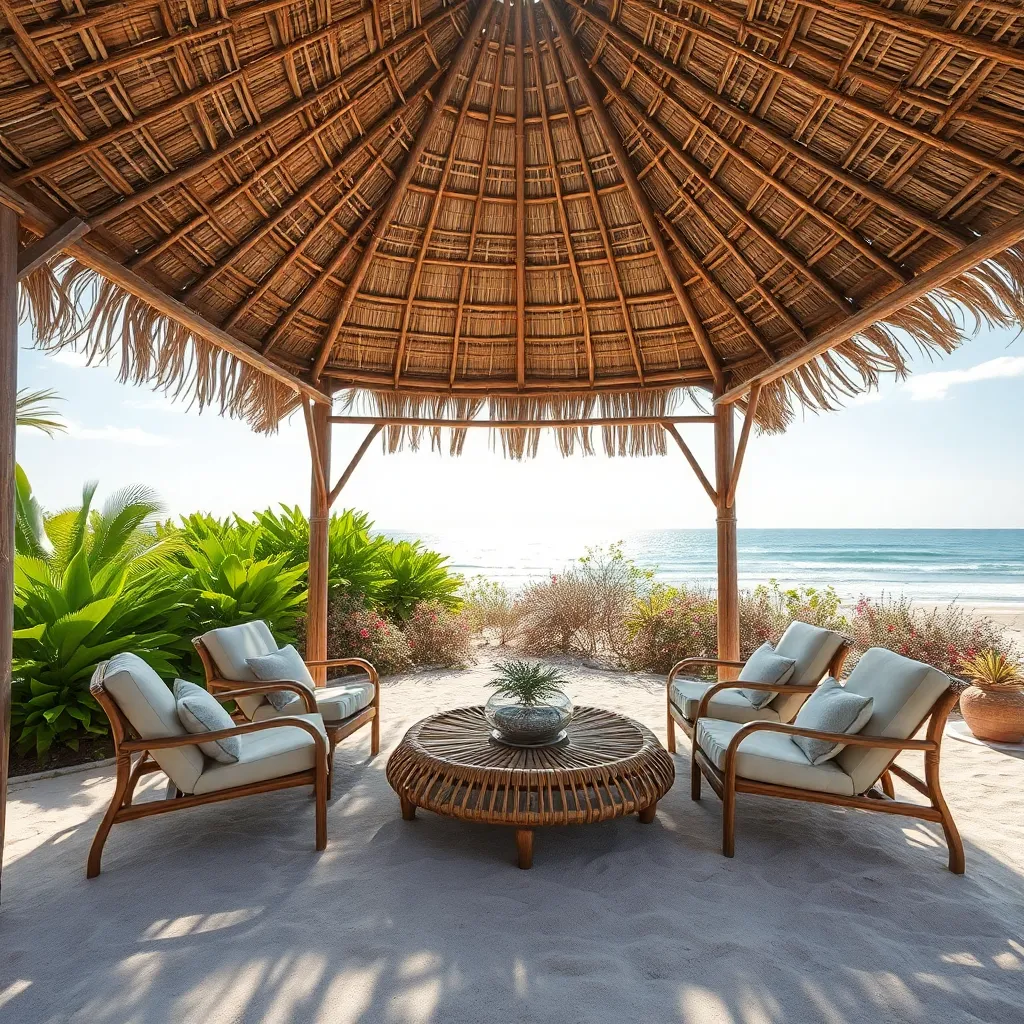
Finding cost-effective ways to create beach shade is easier than you might think. One simple solution is using a large beach umbrella, which is both affordable and portable. Look for umbrellas with a tilt feature and UV-resistant fabric to ensure maximum protection. For those with a DIY spirit, consider making a simple shade sail using durable outdoor fabric like Sunbrella and basic hardware such as eye bolts and turnbuckles. Secure it between trees or stakes for a quick, flexible setup.
Another budget-friendly option is the use of a pop-up canopy tent, which offers instant shade and is easily transportable. Choose a model with a sturdy steel frame and waterproof fabric for durability, especially in windy beach conditions. For added stability, fill the canopy’s sandbags or use stakes to anchor it securely. Advanced tip: Attach side panels or curtains to the canopy for additional sun protection and privacy, maximizing your beach day comfort without breaking the bank.
DIY Lean-To Shelter Techniques
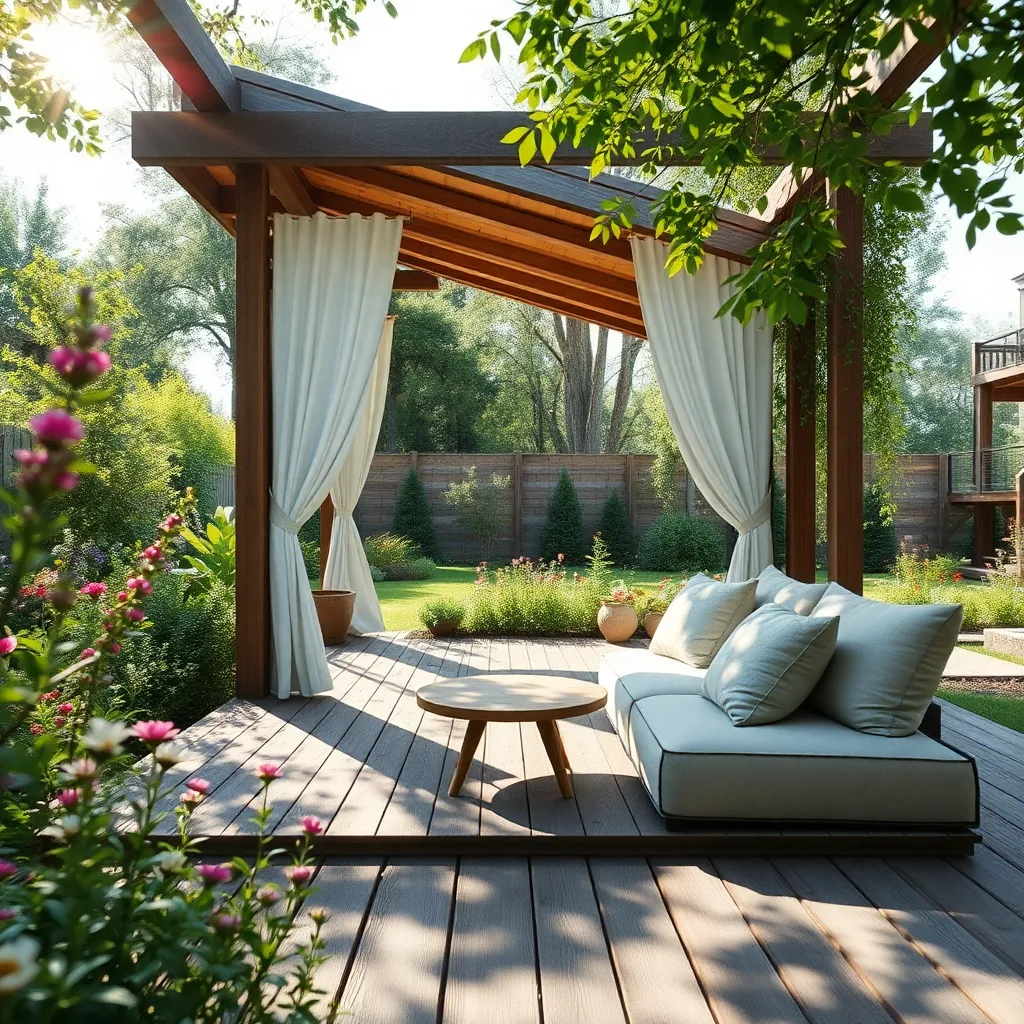
Creating a DIY lean-to shelter is a practical way to add versatile shade or weather protection to your outdoor space. Start by selecting sturdy materials like treated lumber and galvanized steel brackets to ensure durability. For beginners, a simple design involves attaching one side of the structure to an existing wall or fence, which provides stability and reduces the need for extra supports. Ensure the roof is sloped to allow for rain runoff, using materials such as corrugated metal or polycarbonate panels for a weather-resistant finish. A sloping angle of 15 to 30 degrees is usually effective.
For those looking to enhance their lean-to’s functionality, consider adding removable side panels or roll-up tarps that can block wind or increase privacy. Advanced builders might incorporate adjustable brackets to modify the roof’s angle seasonally, optimizing sun or shade exposure. When planning the dimensions, a height of at least 7 feet at the lowest point will ensure comfortable headroom. For added stability, secure the structure with concrete footings, especially if it’s freestanding. This project not only provides shelter but also encourages creative outdoor living solutions.
Retractable Awnings for Outdoor Comfort
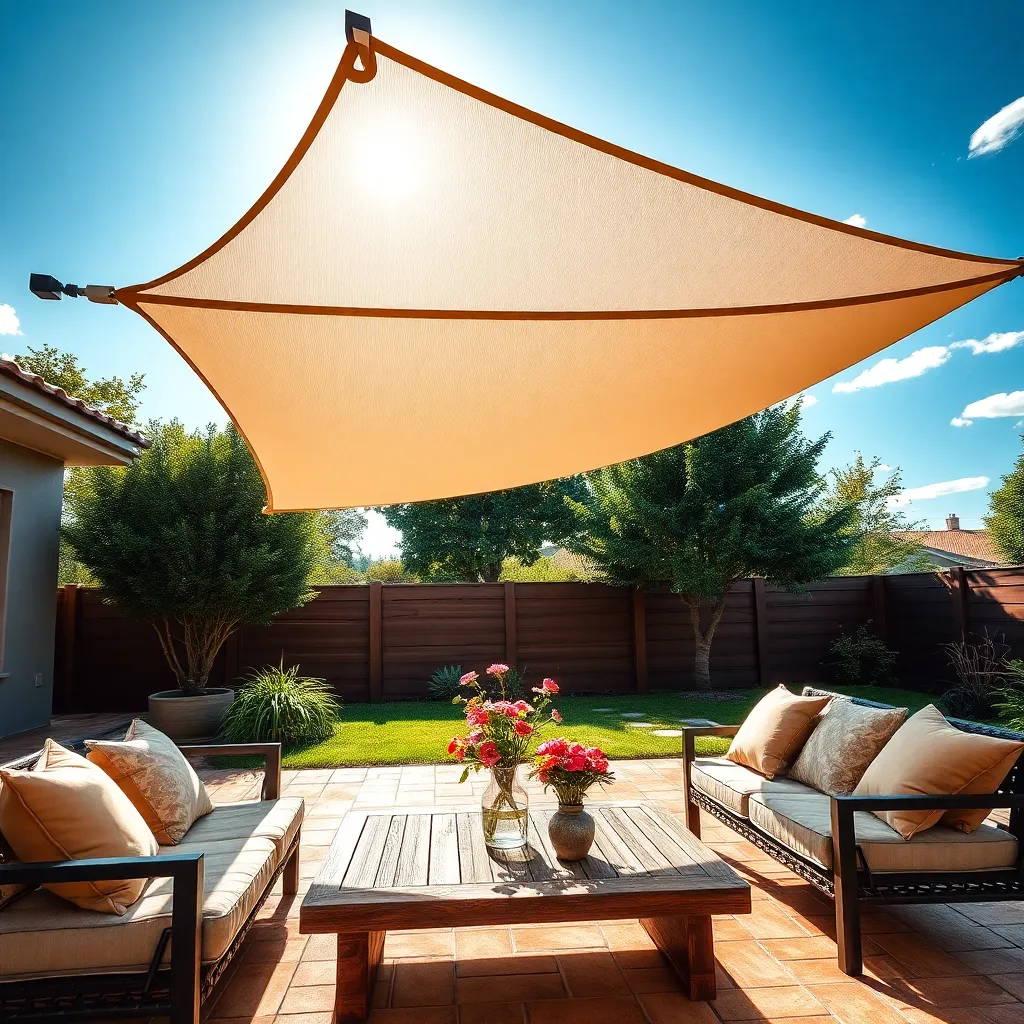
Retractable awnings offer a versatile solution for enhancing outdoor comfort, providing shade and protection from the elements with the ease of a button. For homeowners seeking flexibility, these awnings can be customized to fit various dimensions, ensuring a perfect fit for patios, decks, or garden spaces. When selecting a retractable awning, consider materials like durable acrylic fabrics, which are resistant to fading and mildew, and robust aluminum frames for longevity. Installation can often be completed in a day, making it an accessible project for most DIY enthusiasts.
To maximize the benefits of your retractable awning, consider incorporating additional features like motorized controls or weather sensors that automatically retract the awning during adverse conditions. Advanced users might explore solar-powered options, which provide an eco-friendly and cost-effective solution. For a touch of style, choose an awning color that complements your home’s exterior and landscape, creating a cohesive look. By investing in a high-quality retractable awning, you not only enhance your outdoor space but also increase your home’s overall appeal and functionality.
Budget Yurts: A Unique Option
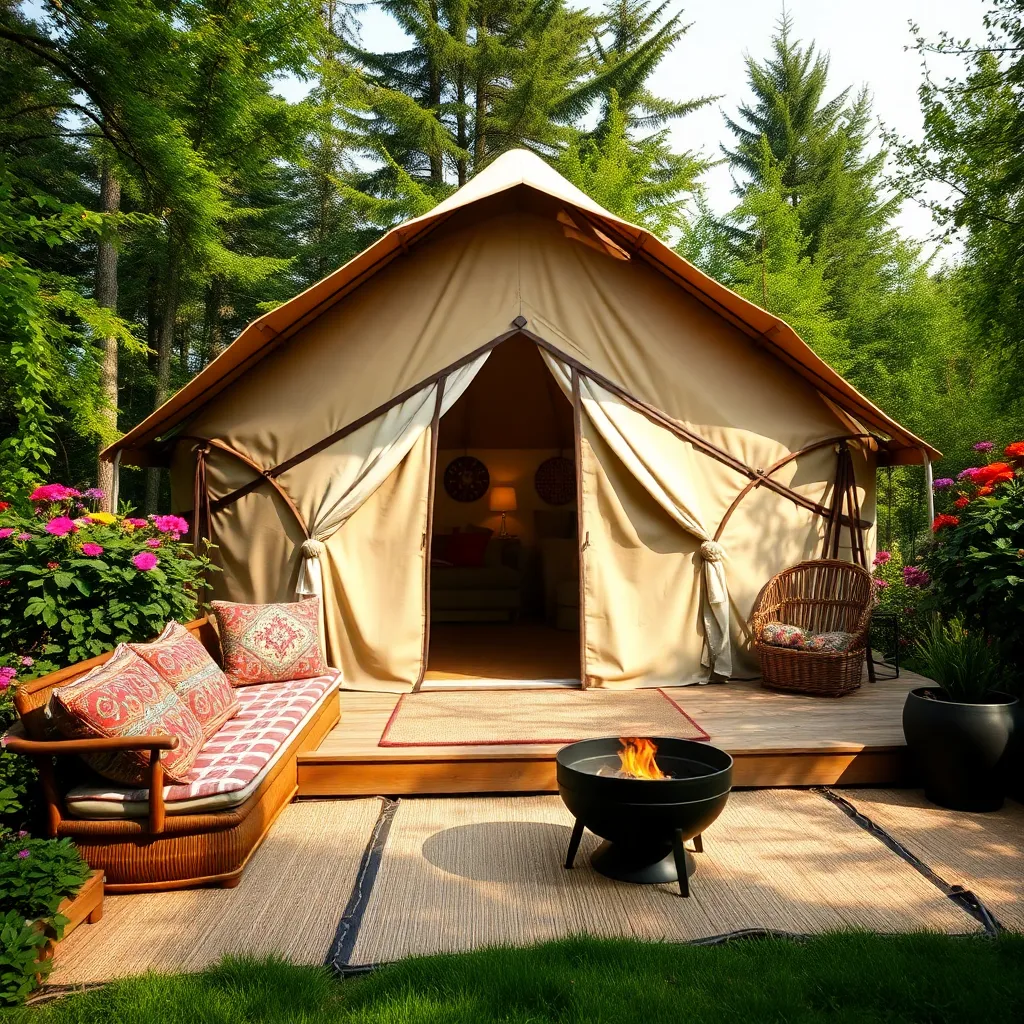
For those looking to create a unique outdoor space without breaking the bank, budget yurts offer a distinctive and cost-effective solution. These circular shelters are often constructed using a combination of wood lattice walls, insulated fabric covers, and sturdy tension cables, providing a blend of durability and comfort. Beginners can opt for DIY yurt kits, which typically include all necessary materials and instructions, making assembly straightforward even for those new to construction projects.
Consider the location and size when planning your yurt, as they can range from small, cozy retreats to larger family spaces. To enhance insulation and weather resistance, choose a yurt with a thick, UV-resistant fabric and add a reflective roof liner to manage temperature variations. Advanced builders might experiment with solar-powered vents or custom windows to improve ventilation and natural light. With thoughtful design, a budget yurt can transform your garden into an inviting and functional retreat.
Minimalist Bivouac Shelter Tips
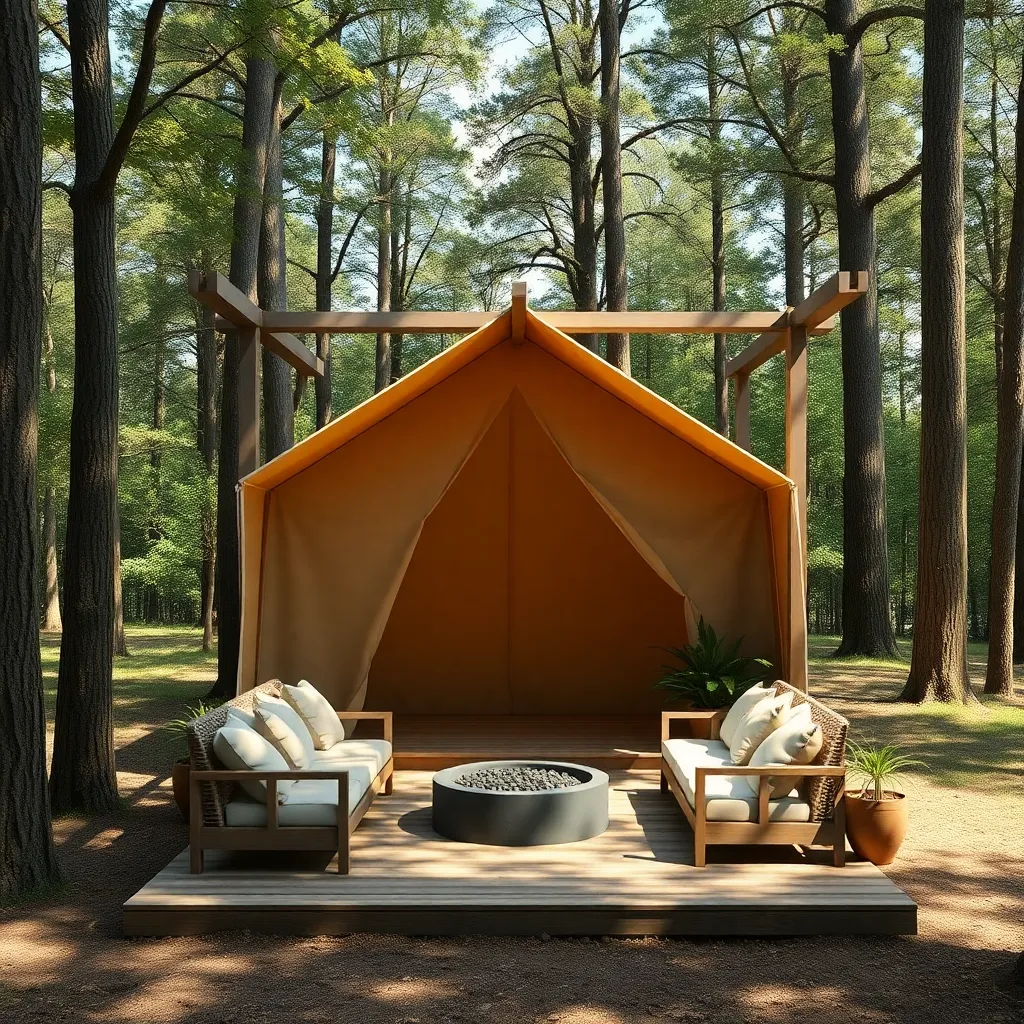
Creating a minimalist bivouac shelter is all about simplicity and efficiency. Start by selecting a location with natural windbreaks like trees or bushes, ensuring the ground is relatively flat and dry. Use a lightweight tarp or a durable, waterproof fabric as your primary material. A tarp measuring about 8×10 feet is ideal, providing ample coverage while remaining compact and easy to pack. Secure the corners with stakes or rocks, and use a rope or paracord to create a ridgeline between two sturdy points, such as trees, to form the shelter’s backbone.
For added stability and comfort, consider incorporating natural elements like fallen branches or logs to reinforce the structure’s sides. Advanced users might add a reflective blanket beneath the tarp for additional warmth and protection. Ensure proper ventilation by positioning the entrance away from prevailing winds and leaving a small gap at the base. This simple setup not only offers shelter but also connects you with nature, making it a practical and enjoyable project for both beginners and seasoned outdoor enthusiasts.
Temporary Shelters for Emergency Use
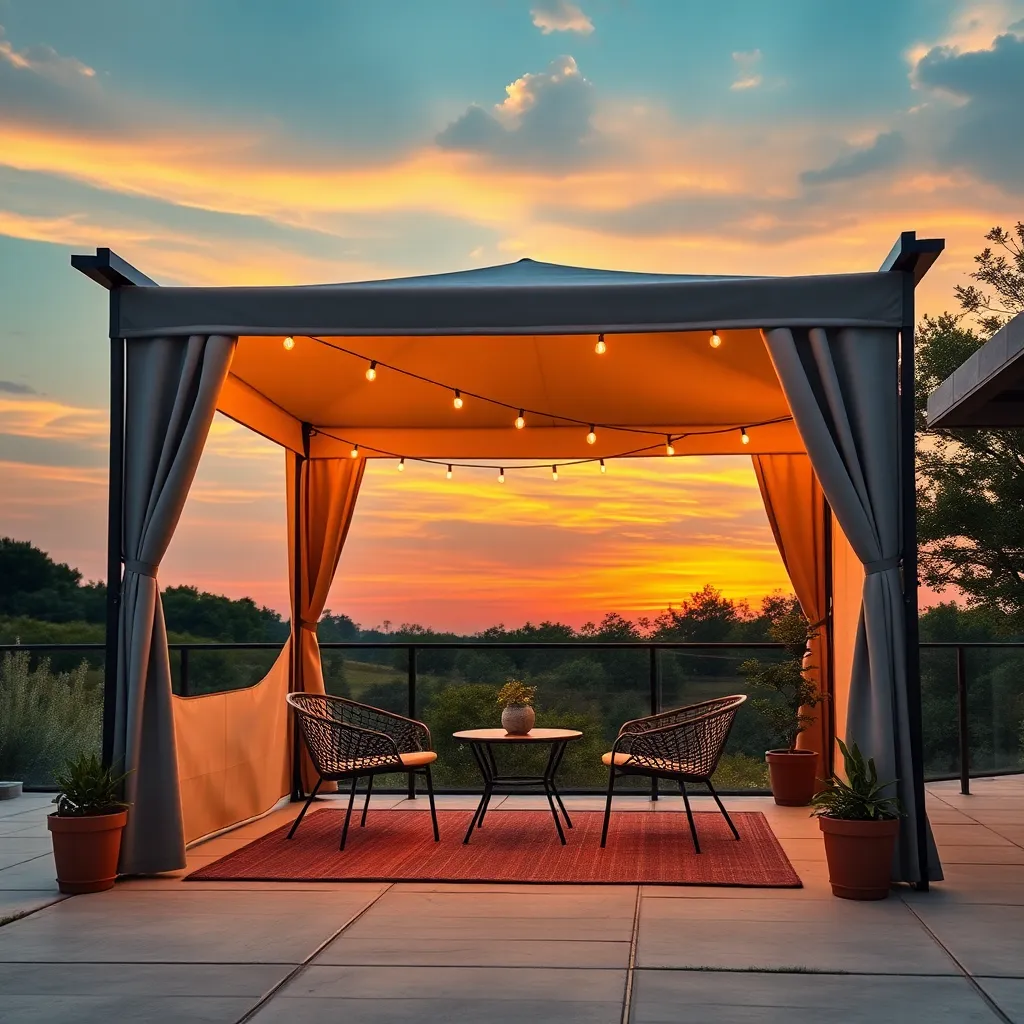
When it comes to setting up temporary shelters for emergency use, speed and simplicity are key. Consider using a tarp, which is both lightweight and versatile. Opt for a tarp made from polyethylene or canvas, as these materials offer durability and water resistance. Simply secure it with rope and stakes, creating a basic A-frame or lean-to design. This setup can provide immediate protection from the elements, making it a practical choice for any homeowner preparing for unexpected situations.
For those looking to enhance their shelter’s stability and comfort, consider incorporating additional features such as a groundsheet and guy lines. A groundsheet made from waterproof material will help keep the interior dry, while guy lines will add support against wind. For a more advanced setup, use telescopic poles to create a free-standing structure, allowing greater flexibility in placement. Remember, the goal is to create a shelter that is both effective and easy to assemble, ensuring you’re ready for whatever nature throws your way.
Conclusion: Creating Beautiful Outdoor Spaces
In exploring the ’12 Flexible Outdoor Shelters for Every Budget’, we’ve uncovered key relationship concepts: adaptability, communication, compromise, shared goals, trust, patience, creativity, teamwork, resilience, financial mindfulness, emotional support, and the importance of creating shared experiences. These concepts not only apply to choosing the right outdoor shelter but are also the bedrock of thriving relationships.
As an actionable next step, consider discussing with your partner which shelter best suits your needs and why. This simple act of collaboration can strengthen your relationship by fostering communication and shared decision-making.
I encourage you to bookmark this article, allowing you to revisit these essential concepts and apply them to various aspects of your relationship journey. By doing so, you’re investing in a resource that can guide and inspire you through the ebbs and flows of partnership.
Remember, building a strong relationship is like choosing the perfect shelter—it’s about finding what fits best for both of you and nurturing that space together. Here’s to your continued success and happiness as you navigate the beautiful, multifaceted journey of love.

